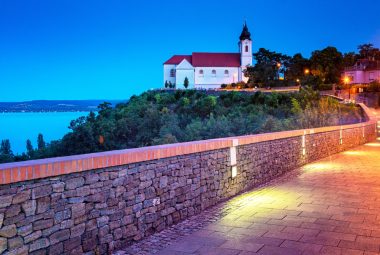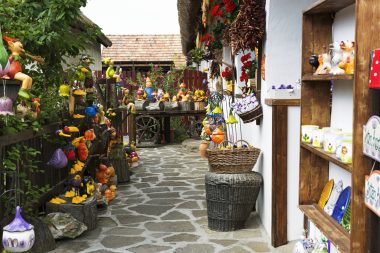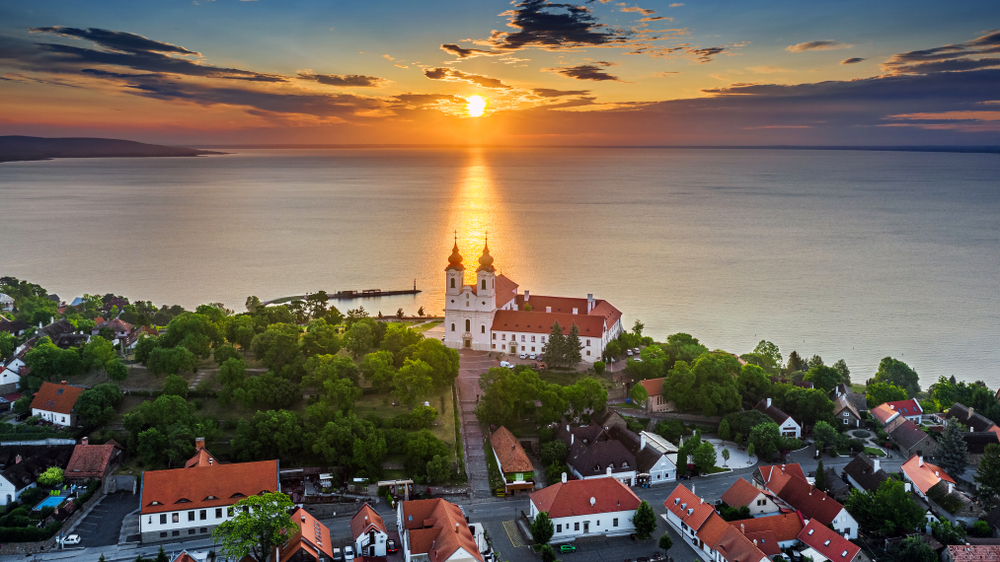On the northern shore of Lake Balaton in Hungary, the largest inland lake in Europe, lies the village of Tihany. The village is located on the peninsula of the same name, its centre is picturesquely enthroned more than 80 metres above the water, visible from afar. Regional cuisine, Hungarian folklore and interesting leisure activities attract numerous visitors every year, and Tihany also has an important symbol of Hungarian history in the form of the remains of an abbey founded by King Andrew I almost 1000 years ago.
Central location on the lake enables optimal mobility
Tihany is well developed in terms of transport. Although the village does not have a train station and is also a bit away from the main road 71, which is important for the Balaton region, this peripheral situation is due to the peninsula location of the village. The road network is nevertheless well developed, as the car ferry crosses from here to the southern shore of Lake Balaton. It runs every 40 to 60 minutes, depending on the season, and Balatonfüred, Balatonföldvar and Siofok can also be reached by excursion boat. Public buses connect Tihany with the nearby villages on the northern shore of Lake Balaton, so that the surrounding area can be explored without your own car.
Fantastic views and culinary specialties

The historical heritage of Tihany
Tihany is a culturally significant place on Lake Balaton. In 1055, King Andrew I founded a Benedictine abbey on the peninsula, which quickly gained supra-regional influence. The founding document of the monastery is one of the most important documents in Hungarian history, in which more than 50 villages in the surrounding area were mentioned for the first time. 
Fascinating nature and water-related leisure activities
Visitors who do not want to deal exclusively with the history of the monastery are also welcome in Tihany. Numerous hiking trails invite you to explore the nature of the peninsula and discover castles, ruins and the two crater lakes “Belsö-to” and “Külsö-to“, which were formed millions of years ago. Fascinating geysers show the visitor that he is still in a region with volcanic activity, at the same time numerous viewpoints allow overwhelming views over the lake. At the lake itself, holidaymakers can also spend relaxing days. Swimming is of course part of Lake Balaton, although the water in the vicinity of Tihany is particularly refreshing, as lower water temperatures prevail due to higher depths. For this reason, the peninsula is also very popular with anglers, while sailing around the entire lake is a pleasant pastime. Finally, tourists can also take the boat to the neighbouring villages, where picturesque vineyards, old village churches, hidden caves and Balatonfüred, the oldest spa town on Lake Balaton, await. All larger towns have the typical shopping mile of Lake Balaton. Numerous stalls and stalls offer useful snacks, regional food and souvenirs, while night owls should feel particularly at home in the seaside metropolis of Siofok. However, the quiet life is not far away either, because the Puszta begins only a few kilometers from the lake. Holidaymakers can enjoy the incredible expanse of the Hungarian countryside and watch cows and ponies trot through picturesque villages. A small, hidden inn is also quickly found in the Puszta and it is not uncommon for funny musicians to play tasty and inexpensive meals.
General information
Tihany is known for its picturesque landscape, which is rich in lavender fields and geological formations. The peninsula is also known for the Tihany Echo, a natural echo that was once reflected back from the steep walls of the former monastery.
Climate
The climate in Tihany is temperate continental, with warm summers and cool, humid winters. The best time to visit is from spring to autumn, when temperatures are pleasant and nature is in full bloom.
Sights
- The Benedictine Abbey of Tihany: Founded in 1055, it is one of the main attractions on the peninsula and is known for its impressive Baroque architecture and historic tombs.
- Lavender fields: Tihany is famous for its extensive lavender fields, which bloom especially in June and are a popular destination for tourists.
- Inner Lake and Outer Lake: Two crater lakes located on the peninsula that are popular places for walks and nature watching.
- Tihanyi PIAC Marketplace: A local market where visitors can buy handmade handicrafts, local specialties, and fresh produce.
Activities
- Hiking and cycling: The peninsula offers numerous hiking and cycling trails that lead through beautiful landscapes.
- Boat tours on Lake Balaton: From Tihany, visitors can take various boat tours on Lake Balaton.
- Visit to the lavender fields: A must, especially in June during the flowering season.
- Birdwatching: The region is rich in bird life, especially in the transitional seasons.
Culture
Tihany has a rich cultural history, which is reflected in the architecture, museums, and local festivals. The village preserves many of its traditional customs and offers cultural events throughout the year.
Gastronomy
The gastronomy in Tihany reflects the culinary diversity of the Balaton region, with an emphasis on fresh fish dishes and regional wines. Local specialties include dishes such as the “Balaton whitefish”.
Journey
Tihany is easily accessible by car, as it is close to the main traffic arteries around Lake Balaton. The nearest major train station is in Balatonfüred, from where there are regular bus connections to the peninsula.


